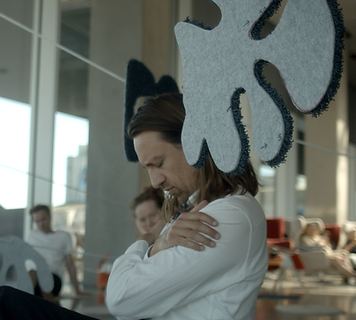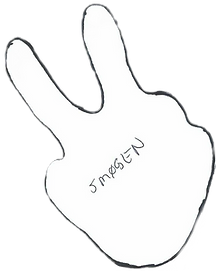Ikigai
An exploration of life’s calling through architecture and performing arts.
Dokk1 + Onsite Gallery
22.04.25 ― 21.05.25
Ikigai was an interdisciplinary art project created by Kaosteater and the architecture studio Rumgehør, exploring what gives life meaning – not as a fixed formula, but as a living, embodied process.
The project merged the sensorial qualities of performing arts with the spatial strategies of architecture and the physical language of dance, realized as an experiment based on flat structures and open co-creation with the audience.
With the Japanese word Ikigai – “a reason to get up in the morning” – as its focal point, we explored how movements can carry personal meanings, and how these can be shared, translated, and passed on.




Two phases – two works
The Movement Archive
Dokk1, Aarhus
In the project’s first phase, we invited the audience into The Movement Archive – an interactive scenic universe built from carpet shapes cut out of donated carpet remnants from Egetæpper. Here, guests could both experience and contribute:
They could archive a movement of personal significance, see it transformed into choreography by an actor and a dancer, and take part in workshops where they created new carpet shapes for the archive themselves.
The Movement Bank
ONSITE Gallery, Aarhus School of Architecture
In the second phase, we developed the idea further and created the Movement Bank. Here, the audience could step into the bank’s waiting room, book an appointment with an advisor, and receive a movement drawn directly from the archive. The encounter was personal, yet also part of a larger collective artwork, where one could observe the transfer of movements to others from the space outside.


The artistic team consisted of:
Dramaturg:
Marieke Thorndal Asman
Actor:
Jeppe Alsgaard Pachaï
Dancer:
Alvilda Faber
Architect:
Rasmus R. B. Maabjerg
Video Artist:
Kim Svendsen
Process Leaders:
Cecilie Reshide & Kristian Herlev


An interdisciplinary, experimental encounter
Ikigai was not just two works, but a process where an architect, actor, dancer, dramaturg, and video artist worked side by side without hierarchical division.
We combined methods from architectural design and the devising processes of performing arts, with dance serving as the bridge between body and space.




The projekt was funded by

